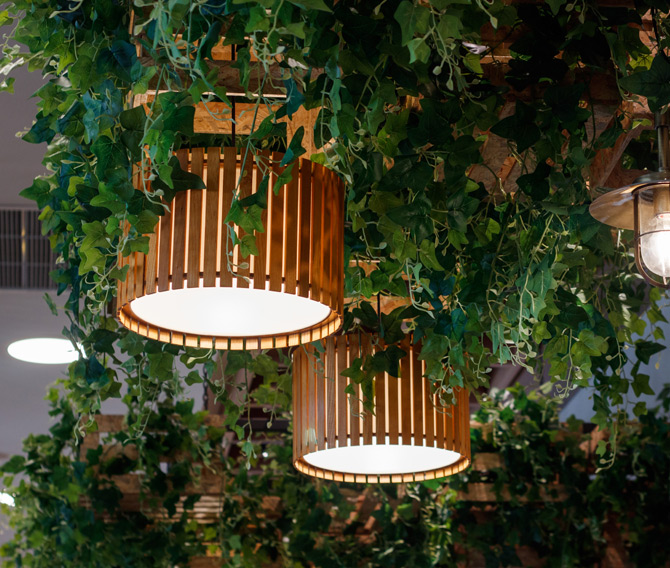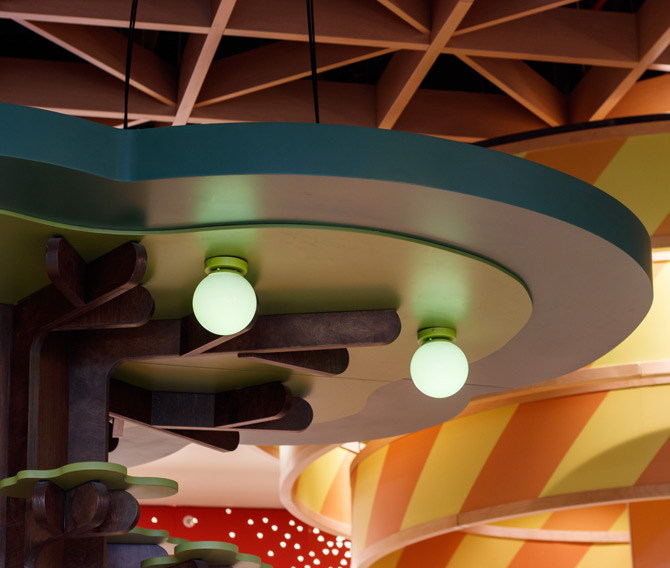
Creating a welcoming atmosphere in a shopping mall is essential for enhancing the shopping experience, with lighting playing a key role. Warm, bright, and ambient lighting makes shoppers feel comfortable and energized, while accent lighting highlights important areas and product displays.
When designing lighting for shopping malls, three key factors should be considered to enhance the shopping experience while maintaining functionality.

Creating a welcoming atmosphere in a shopping mall is essential to enhancing the overall shopping experience. Lighting plays a key role in setting the tone by providing warm, bright illumination that creates an inviting, energetic vibe while maintaining comfort. Soft, ambient lighting throughout the space ensures that shoppers feel at ease, while strategically placed accent lighting draws attention to key areas, like entrances, escalators, and high-traffic zones, guiding customers effortlessly through the mall. By balancing general lighting with focal points of interest, the lighting design encourages exploration, making shoppers feel welcome and enhancing their overall experience.

Creating a welcoming atmosphere in a shopping mall is essential to enhancing the overall shopping experience. Lighting plays a key role in setting the tone by providing warm, bright illumination that creates an inviting, energetic vibe while maintaining comfort. Soft, ambient lighting throughout the space ensures that shoppers feel at ease, while strategically placed accent lighting draws attention to key areas, like entrances, escalators, and high-traffic zones, guiding customers effortlessly through the mall. By balancing general lighting with focal points of interest, the lighting design encourages exploration, making shoppers feel welcome and enhancing their overall experience.
Highlighting products and storefronts is crucial in creating an engaging shopping experience that draws customers in. To showcase merchandise effectively,accent lighting should be used to focus attention on key products and displays, ensuring they stand out without overwhelming the space. Techniques like track lighting or recessed downlights allow for precise illumination of product displays, emphasizing details and colors. Additionally, using adjustable LEDs with the ability to control color temperature helps ensure that products appear in their best light, preserving their true colors and textures. This focused lighting not only enhances the visual appeal of the merchandise but also encourages shoppers to engage with the displays, increasing the likelihood of purchase.


Highlighting products and storefronts is crucial in creating an engaging shopping experience that draws customers in. To showcase merchandise effectively,accent lighting should be used to focus attention on key products and displays, ensuring they stand out without overwhelming the space. Techniques like track lighting or recessed downlights allow for precise illumination of product displays, emphasizing details and colors. Additionally, using adjustable LEDs with the ability to control color temperature helps ensure that products appear in their best light, preserving their true colors and textures. This focused lighting not only enhances the visual appeal of the merchandise but also encourages shoppers to engage with the displays, increasing the likelihood of purchase.

Energy efficiency and sustainability are vital considerations in shopping mall lighting design, given the large scale of these spaces and the need for constant illumination. To reduce energy consumption and minimize environmental impact, LED lighting is the preferred choice due to its long lifespan, low energy usage, and minimal heat emission. Incorporating motion sensors and dimming controls allows lighting levels to adjust based on foot traffic, ensuring that areas are only lit when needed, which further conserves energy. Additionally, smart lighting systems can optimize the lighting schedule, adjusting brightness levels automatically according to natural daylight and the time of day. By implementing these energy-efficient solutions, malls not only reduce operational costs but also contribute to sustainability goals, offering an eco-friendly shopping environment for customers.

Energy efficiency and sustainability are vital considerations in shopping mall lighting design, given the large scale of these spaces and the need for constant illumination. To reduce energy consumption and minimize environmental impact, LED lighting is the preferred choice due to its long lifespan, low energy usage, and minimal heat emission. Incorporating motion sensors and dimming controls allows lighting levels to adjust based on foot traffic, ensuring that areas are only lit when needed, which further conserves energy. Additionally, smart lighting systems can optimize the lighting schedule, adjusting brightness levels automatically according to natural daylight and the time of day. By implementing these energy-efficient solutions, malls not only reduce operational costs but also contribute to sustainability goals, offering an eco-friendly shopping environment for customers.
PROJECT REFERANCES
